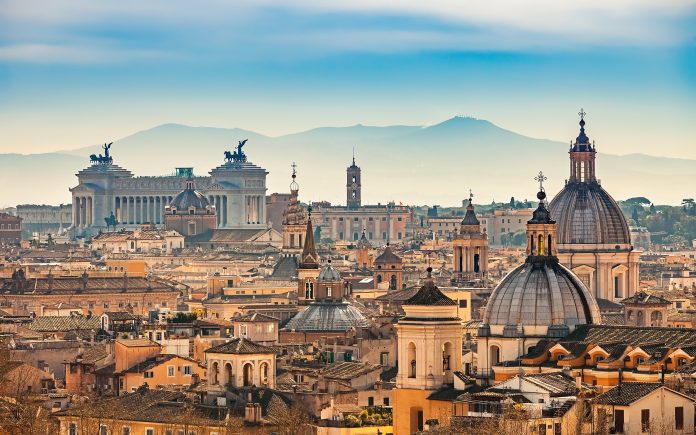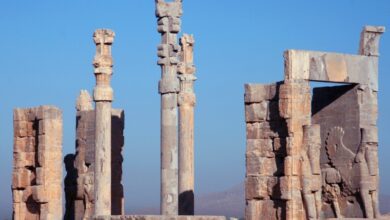
Are you a Middle Easterner dreaming of an unforgettable Roman holiday? Look no further! “The Eternal City Awaits: A Middle Easterner’s Roman Holiday” is your ultimate guide to exploring the enchanting and historic city of Rome. From ancient ruins to mouthwatering cuisine, this article will take you on a captivating journey, providing insider tips and recommendations to ensure your trip is nothing short of extraordinary. Get ready to immerse yourself in the rich culture and vibrant atmosphere of Rome, as you create memories that will last a lifetime.
Planning Your Trip to Rome
Best Time to Visit
When planning your trip to Rome, it is important to consider the best time to visit the city. The peak tourist season in Rome is during the summer months of June, July, and August when the weather is warm and sunny. However, this is also the busiest time of the year, with large crowds and long lines at popular tourist attractions. If you prefer to avoid the crowds and enjoy a more pleasant weather, consider visiting Rome during the shoulder seasons of spring (April and May) or fall (September and October). During these times, the weather is usually mild, and the city is less crowded, allowing you to explore and experience Rome at a more relaxed pace.
Visa Requirements
Before you embark on your Roman holiday, it is essential to check the visa requirements for your specific nationality. Citizens of some countries may require a visa to enter Italy, while others may be exempt. You can easily find information about visa requirements by contacting the nearest Italian embassy or consulate in your country or by visiting the official website of the Italian Ministry of Foreign Affairs. Make sure to have all the necessary documents and apply for your visa well in advance to avoid any last-minute complications.
Getting There
There are several ways to reach Rome, depending on your location and personal preferences. If you are flying from a different country, you can book a flight to Rome’s Leonardo da Vinci International Airport (Fiumicino Airport), which is the primary international airport serving the city. From the airport, you can easily reach the city center by taking a taxi, airport shuttle, or the Leonardo Express train, which departs every 15 minutes and takes you directly to Roma Termini, the main train station in Rome.
If you prefer traveling by train, Rome has excellent rail connections to other major cities in Italy and Europe. The city is served by several train stations, with Roma Termini being the most central and busiest one. You can check the train schedules and book your tickets in advance online or directly at the train station.
For those who enjoy road trips, driving to Rome is also an option. The city is well-connected to the Italian highway network, and there are good road connections from other parts of Italy and neighboring countries. Keep in mind that driving in Rome can be quite challenging due to heavy traffic and limited parking options. Consider renting a car only if you are confident in your driving skills and familiar with the local traffic rules.
Accommodation Options
Rome offers a wide range of accommodation options to suit every budget and preference. From luxury hotels to budget-friendly hostels, there is something for everyone. If you want to experience the charm of Rome’s historic center, consider staying in one of the centrally located hotels. These hotels are within walking distance of major attractions such as the Colosseum and the Trevi Fountain. If you prefer a quieter neighborhood, look for accommodations in areas like Trastevere or Monti, which offer a more local and relaxed atmosphere.
Alternatively, if you are traveling on a budget or prefer a more social experience, consider staying in a hostel. Rome has plenty of well-equipped and affordable hostels where you can meet fellow travelers and exchange tips and stories. Additionally, there are also vacation rentals and guesthouses available for those who want a more homely and personalized experience.
When booking your accommodation, make sure to check reviews and compare prices to find the best option that suits your needs. Additionally, consider the location, amenities, and accessibility to public transportation to make your stay in Rome as comfortable and convenient as possible.
Exploring Rome’s Historic Sites
The Colosseum
One of the most iconic landmarks in Rome, the Colosseum is a must-visit attraction for history buffs and architecture enthusiasts. This ancient amphitheater, built in the 1st century AD, was used for gladiatorial contests, theatrical performances, and other spectacles. Today, it stands as a testament to the grandeur and engineering marvel of the Roman Empire.
Visiting the Colosseum allows you to step back in time and imagine the fierce battles and vibrant entertainment that took place within its walls. Walk through the arches and passageways where thousands of spectators once cheered on their favorite gladiators. Take a guided tour to learn more about the history and significance of this iconic structure, or explore at your own pace with an audio guide.
It is advisable to book your tickets in advance to avoid long queues, especially during the peak tourist season. Additionally, consider purchasing a combined ticket that includes access to other nearby attractions such as the Roman Forum and Palatine Hill, as these sites are closely interconnected and offer a comprehensive understanding of ancient Rome.
The Vatican
No trip to Rome is complete without a visit to the Vatican City, the smallest independent state in the world. The Vatican is the spiritual epicenter of the Roman Catholic Church and home to some of the most famous artistic treasures in the world.
Start your Vatican adventure by visiting St. Peter’s Basilica, an awe-inspiring masterpiece of Renaissance architecture. Marvel at the grandeur of Michelangelo’s Pieta and admire the intricate details of Bernini’s Baldachin. Climb to the top of the dome for a panoramic view of Rome that is worth the effort.
Next, explore the Vatican Museums, which house an extensive collection of art and historical artifacts. Highlights include the Sistine Chapel, adorned with Michelangelo’s breathtaking ceiling frescoes, and the Raphael Rooms, showcasing the works of Raphael and his contemporaries.
It is advisable to purchase skip-the-line tickets or book a guided tour to avoid long queues and make the most of your visit. Dress modestly, as the Vatican has a strict dress code, and be prepared for security checks before entering the premises.
Roman Forum
Nestled between the Palatine Hill and the Capitoline Hill, the Roman Forum offers a glimpse into the heart of ancient Rome. Once the center of political, commercial, and religious life, the Forum was the social and cultural hub of the ancient city.
Explore the ruins of majestic temples, basilicas, and arches, and imagine the bustling marketplace that once thrived within these walls. Marvel at the remnants of the Roman Senate, where decisions that shaped the fate of the empire were made.
To enhance your visit, consider hiring a guide who can bring the history and stories of the Forum to life. Alternatively, audio guides are available for rent at the site, providing a wealth of information and narratives as you explore at your own pace.
Pantheon
The Pantheon is another architectural gem that should not be missed during your visit to Rome. This ancient Roman temple, originally built as a temple to honor all the gods, is now a Catholic church and a testament to the ingenuity and craftsmanship of the Roman Empire.
Step into the grand portico and marvel at the vast dome, which was the largest unreinforced concrete dome in the world for more than a millennium. Admire the oculus, a circular opening in the center of the dome, which allows sunlight and rain to pour into the interior.
As you enter the Pantheon, take a moment to appreciate the impressive interior, adorned with marble and intricate detailing. Pay your respects at the tombs of renowned figures such as the artist Raphael and Italian kings.
Don’t forget to look up and marvel at the symmetrical beauty of the dome’s architecture, a true engineering marvel of its time. Visit during daylight hours to witness the magical effect of the sunlight streaming through the oculus, illuminating the interior in a unique and ethereal way.
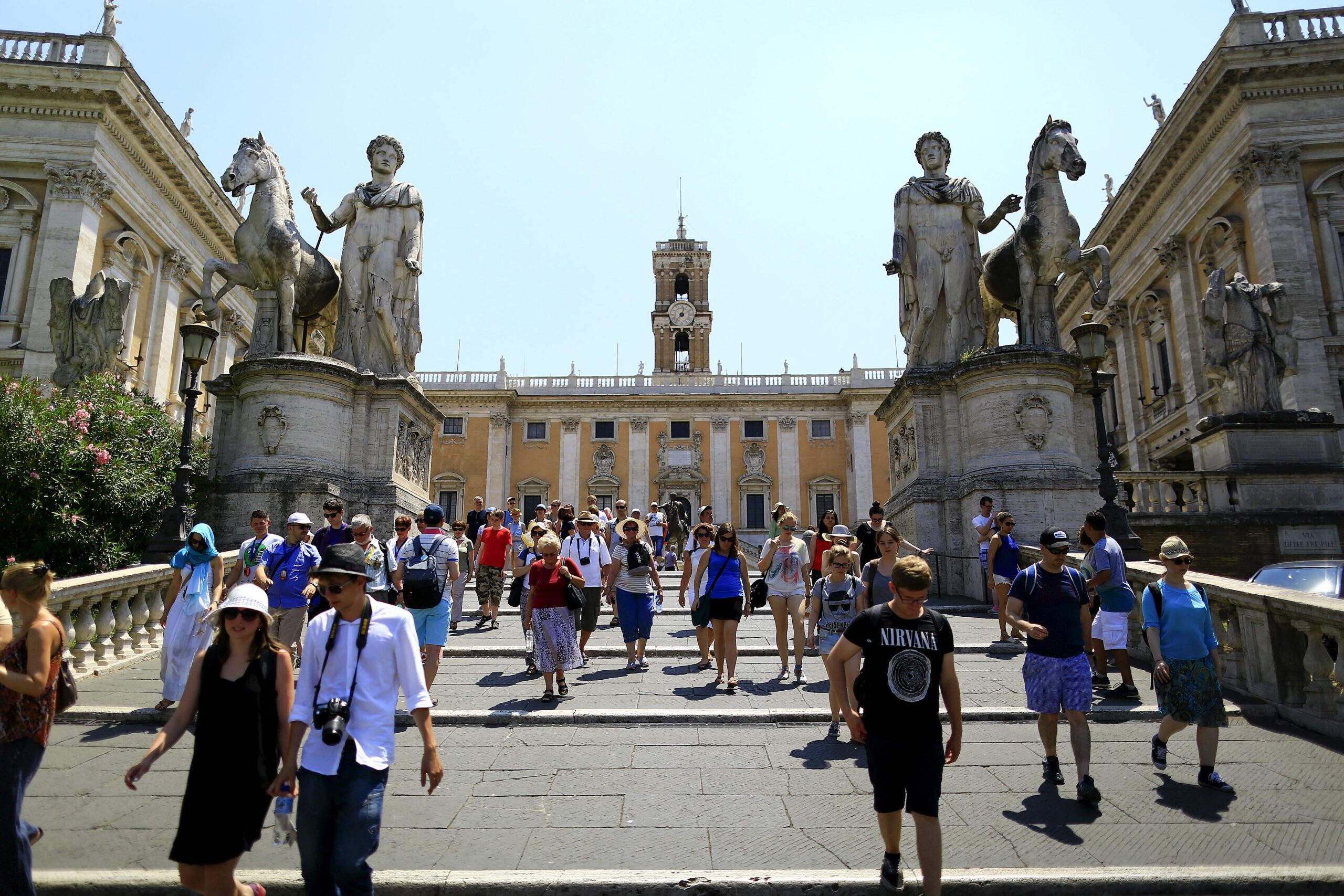
Immersing in Roman Culture
Sampling Italian Cuisine
One of the highlights of visiting Rome is indulging in the city’s mouthwatering cuisine. From fresh pasta and pizza to gelato and espresso, Rome offers a culinary experience that is sure to delight your taste buds.
Start your food journey by savoring authentic Roman dishes such as cacio e pepe (pasta with cheese and pepper), carbonara (pasta with egg, cheese, and pancetta), and supplì (deep-fried rice balls with cheese). Explore local trattorias and osterias to taste traditional Roman recipes passed down through generations.
No visit to Rome is complete without trying the city’s signature dish, pizza. Roman-style pizza is typically thin and crispy, with a variety of toppings to choose from. Don’t forget to pair your meal with a glass of local wine, such as Frascati or Chianti, to enhance the flavors of the food.
For dessert, indulge in the creamy goodness of gelato. Rome boasts numerous gelaterias that offer a wide range of flavors, from classic options like chocolate and pistachio to unique combinations like fig and ricotta. Take a leisurely stroll in the evening and enjoy your gelato while admiring the beauty of Rome’s streets and squares.
Learning Basic Italian Phrases
While many people in Rome speak English, learning a few basic Italian phrases can greatly enhance your experience and show respect for the local culture. Italians appreciate when visitors make an effort to communicate in their language, even if it’s just a few words.
Start by learning greetings such as “buongiorno” (good morning), “buonasera” (good evening), and “ciao” (hello/goodbye). Express your gratitude by saying “grazie” (thank you) or “prego” (you’re welcome).
Knowing how to ask for directions, order food, and handle basic transactions in Italian can also be helpful. Practice phrases like “scusi, dov’è…?” (excuse me, where is…?), “vorrei un caffè, per favore” (I would like a coffee, please), and “quanto costa?” (how much does it cost?).
Even if your pronunciation is not perfect, most locals will appreciate your effort and be happy to assist you in English if needed. Learning a few basic phrases can go a long way in creating meaningful connections with the locals and making your trip more enjoyable.
Attending a Traditional Roman Event
To truly immerse yourself in Roman culture, make sure to attend a traditional Roman event during your visit. Rome is known for its vibrant festivals, celebrations, and cultural gatherings, offering a chance to experience the city’s rich heritage and community spirit.
One of the most famous traditional events in Rome is the Festa di Noantri, which takes place in July. This lively festival celebrates the neighborhood of Trastevere and features processions, music, dance, and delicious food. Join in the festivities, sample local delicacies, and soak up the lively atmosphere.
Another must-see event in Rome is the Befana celebration on January 6th. According to Italian folklore, Befana is an old woman who delivers gifts to children on the Epiphany. Witness the colorful parades, street performances, and the traditional Befana character distributing sweets and gifts.
Additionally, keep an eye out for local markets, exhibitions, and street performances that showcase traditional Roman crafts, music, and dance. These events provide a unique opportunity to engage with the local community, learn about Roman traditions, and create lasting memories of your trip.
Understanding Roman Social Etiquette
To ensure a smooth and respectful interaction with the locals, it is important to understand and observe Roman social etiquette. Romans take pride in their cultural heritage and appreciate visitors who show respect for their customs and traditions.
When greeting someone, a simple handshake or a kiss on both cheeks is common among friends and acquaintances. However, it is advisable to let the locals initiate physical contact, especially during the current COVID-19 pandemic. It is also polite to address people with their title and last name, unless invited to use their first name.
Dress modestly when visiting churches and religious sites, covering your shoulders and knees out of respect. Avoid loud conversations and disruptive behavior in public places, as Romans value peace and tranquility.
When dining out, remember that Italians tend to enjoy their meals at a leisurely pace. Allow yourself to savor each course and refrain from rushing through your meal. Additionally, it is customary to leave a small tip, usually around 10% of the total bill, as a gesture of appreciation for the service provided.
By following these social norms, you will not only show respect for Roman culture but also enhance your overall experience by forging a genuine connection with the locals.
Shopping and Souvenirs
Popular Shopping Areas
No trip to Rome would be complete without a shopping spree to bring back a piece of the Eternal City. Rome offers a plethora of shopping options, from high-end fashion boutiques to street markets and everything in between.
One of the most popular shopping streets in Rome is Via del Corso, located in the heart of the city. This bustling street is lined with international fashion brands, Italian designers, and department stores. Explore the shops, indulge in some retail therapy, and take advantage of the seasonal sales to score great deals.
For those seeking luxury shopping experiences, head to Via dei Condotti, home to renowned fashion houses like Gucci, Prada, and Bulgari. Strolling along this elegant street is an experience in itself, even if you don’t plan on making a purchase.
If you prefer a more eclectic and bohemian vibe, head to the Monti neighborhood. This trendy area is known for its hip boutiques, vintage shops, and local designers. Discover unique fashion pieces, handmade jewelry, and one-of-a-kind treasures that reflect the creativity and style of Rome’s artistic community.
For a different kind of shopping experience, explore the vibrant street markets in Rome. The Campo de’ Fiori market is a bustling market where you can find fresh produce, local delicacies, and artisanal products. The Porta Portese flea market, held every Sunday, is the perfect place to hunt for antiques, vintage clothes, books, and other treasures.
Unique Souvenirs to Buy
When it comes to choosing souvenirs from Rome, there are plenty of unique options that capture the essence of the city. Instead of opting for generic trinkets, consider bringing home something that truly represents Roman culture and craftsmanship.
One popular souvenir is the Italian leather goods. Rome is known for its high-quality leather products, including handbags, wallets, belts, and shoes. Look for reputable leather shops and artisans who create unique pieces using traditional techniques. Make sure to check for authenticity by examining the quality of the leather and craftsmanship.
Another iconic Roman souvenir is the traditional Italian ceramics. From delicately painted plates and bowls to colorful tiles and pottery, Italian ceramics make for beautiful and functional mementos. Visit local ceramic shops or markets to find authentic pieces that add a touch of Italian charm to your home.
For art enthusiasts, consider purchasing a piece of artwork from one of Rome’s many galleries or street artists. Whether it’s a painting, photograph, or sculpture, bringing home a unique piece of art allows you to carry a part of Rome’s vibrant artistic scene with you.
Additionally, indulge in the flavors of Rome by bringing back some local culinary delights. Purchase a selection of Italian spices, olive oils, or wines from specialty stores to recreate the flavors of Rome in your own kitchen. Don’t forget to check the customs regulations of your home country regarding the import of food products.
Bargaining Tips
While bargaining is not a common practice in most shops and markets in Rome, there are a few exceptions where you may be able to negotiate the price, especially in street markets or when purchasing multiple items. Here are some tips to help you navigate the bargaining process:
-
Do your research: Before entering into any negotiation, research the fair market value of the item you are interested in purchasing. This will give you an idea of the approximate price range and help you make a reasonable offer.
-
Be respectful and friendly: Approach bargaining as a friendly negotiation rather than a confrontation. Smile, maintain a positive attitude, and engage in polite conversation with the seller.
-
Start with a lower offer: Begin the negotiation by offering a price significantly lower than the asking price. This allows room for the seller to counteroffer and facilitates a more favorable outcome for both parties.
-
Be prepared to walk away: If the seller is unwilling to negotiate or the price is not within your budget, be prepared to walk away. Sometimes, the possibility of losing a sale can prompt the seller to reconsider their pricing.
-
Bundle purchases: If you are interested in multiple items from the same seller, consider bundling them together and negotiating a discounted price for the whole package. This can often result in a better deal.
Remember, bargaining is not always appropriate or expected, especially in high-end stores or establishments with fixed prices. Use your discretion and gauge the situation before attempting to negotiate the price.
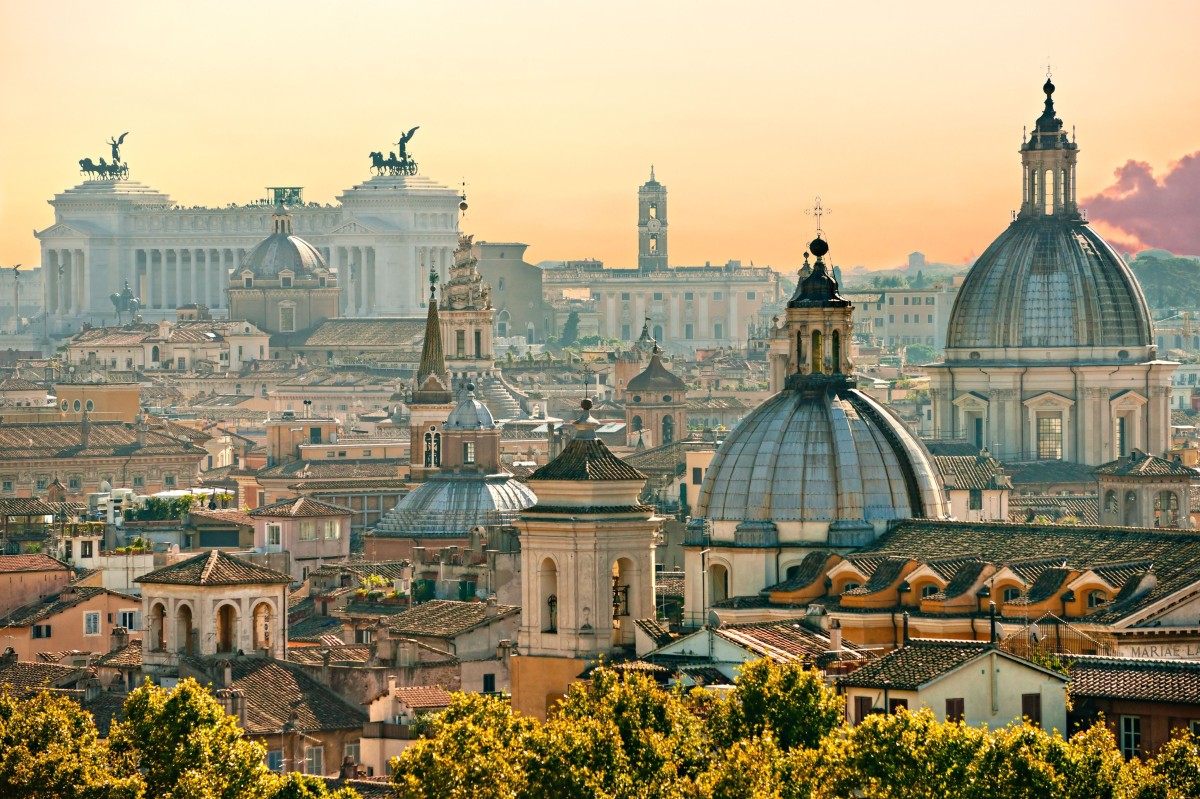
Taking Day Trips from Rome
Exploring Pompeii
If you have extra time during your visit to Rome, consider taking a day trip to Pompeii, one of the most well-preserved ancient cities in the world. Located near the city of Naples, Pompeii offers a unique glimpse into life during the Roman Empire.
Once a thriving city, Pompeii was buried under layers of ash and pumice after the eruption of Mount Vesuvius in 79 AD. The volcanic ash acted as a natural preserver, protecting the buildings, artwork, and everyday objects from decay.
Walk along the ancient streets of Pompeii and explore the remarkably intact ruins of houses, temples, and public buildings. Marvel at the intricate frescoes, mosaics, and sculptures that provide insights into the daily life of the ancient Romans.
To make the most of your visit, consider booking a guided tour, which will provide you with detailed explanations and fascinating stories about the history and significance of Pompeii. Alternatively, rent an audio guide or explore at your own pace with a map to create your own unique experience.
Visiting the Amalfi Coast
Escape the bustling city and take a relaxing day trip to the picturesque Amalfi Coast. Located in southern Italy, this stunning coastline is renowned for its dramatic cliffs, turquoise waters, and charming seaside towns.
Start your day trip by visiting the town of Amalfi, which gives the coast its name. Admire the pastel-colored buildings, visit the impressive Amalfi Cathedral, and take a leisurely stroll along the scenic harbor. Enjoy a refreshing gelato or a delicious seafood meal while soaking in the beauty of the coast.
Next, embark on a scenic drive to Positano, a town famous for its vertical landscape and glamorous atmosphere. Walk down the narrow streets, browse through the upscale boutiques, and enjoy stunning views of the colorful houses cascading down the hillside towards the sea. Relax on one of the picturesque beaches or enjoy a cocktail at a cliffside bar.
For a truly memorable experience, consider taking a boat tour along the coast, allowing you to admire the breathtaking views from a different perspective. Swim in the crystal-clear waters, explore hidden coves, and discover secluded beaches accessible only by boat.
Discovering Tuscany
Another popular day trip option from Rome is exploring the beautiful region of Tuscany. Known for its rolling hills, vineyards, and charming villages, Tuscany offers a peaceful and picturesque escape from the bustling city.
Start your day by visiting the medieval city of Siena. Stroll through the narrow streets of the historic center, marvel at the impressive Siena Cathedral, and visit the famous Piazza del Campo, where the Palio horse race takes place twice a year. Enjoy a traditional Tuscan lunch at one of the local trattorias before continuing your journey.
Next, head to the charming town of San Gimignano, often referred to as the “Medieval Manhattan” due to its famous towers. Explore the well-preserved medieval architecture, climb one of the towers for panoramic views of the countryside, and sample the local Vernaccia wine, produced in the surrounding vineyards.
End your day trip with a visit to the picturesque town of Pisa, famous for its iconic leaning tower. Admire the architectural marvels in the Campo dei Miracoli (Field of Miracles), including the cathedral and baptistery. Take the obligatory tourist photo, pretending to hold up the leaning tower, and wander through the charming streets lined with shops and cafes.
Excursions to nearby Islands
If you are seeking a unique and off-the-beaten-path experience, consider taking a day trip to one of the nearby islands from Rome. Explore the natural beauty, crystal-clear waters, and rich history of these idyllic destinations.
One of the most popular island destinations is Capri, located in the Bay of Naples. Take a ferry from Naples or Sorrento and arrive on the island known for its stunning views, luxurious resorts, and vibrant atmosphere. Explore the famous Blue Grotto, a sea cave illuminated by an otherworldly blue light, or take a chairlift to the island’s highest point for breathtaking panoramas.
Another beautiful island to visit is Ponza, located in the Tyrrhenian Sea. Known for its rugged coastline, hidden caves, and crystal-clear waters, Ponza offers a tranquil and secluded escape from the mainland. Take a boat tour to discover the island’s picturesque coves, perfect for swimming, snorkeling, and sunbathing.
For a more historical and archaeological experience, consider visiting the island of Ischia. Known for its thermal spas and ancient ruins, Ischia offers a unique blend of relaxation and cultural exploration. Explore the Aragonese Castle, visit the Roman villas and thermal baths, and indulge in a rejuvenating spa treatment.
Keep in mind that ferry schedules may vary depending on the season, so it is advisable to check the timetables in advance and plan your day trip accordingly.
Navigating Rome’s Public Transportation
Using the Metro
Rome’s metro system is a convenient and efficient way to navigate the city and reach various attractions. The metro network consists of three lines: Line A (red), Line B (blue), and Line C (green). Each line connects to different parts of the city, making it easy to reach popular tourist destinations.
To use the metro, you need to purchase a ticket from the ticket machines or ticket offices located in the metro stations. Tickets can be bought as single tickets or as day passes, allowing unlimited travel on buses, trams, and the metro for a specified duration. Make sure to validate your ticket at the entry gates or on board the bus/tram to avoid fines.
The metro operates from approximately 5:30 am to 11:30 pm, with extended operating hours on Fridays and Saturdays. Trains are frequent, especially during peak hours, but it is advisable to check the schedules in advance, as service may be reduced during weekends and holidays.
Taking Buses and Trams
Rome’s bus and tram network is extensive and covers most parts of the city, offering a convenient way to reach attractions not served by the metro. Buses and trams operate from early morning until midnight, with some night buses running during late hours.
To use buses and trams, you can purchase tickets from tobacco shops, newsstands, or ticket machines located near bus stops. Like the metro tickets, bus and tram tickets need to be validated upon boarding. Remember to keep your ticket with you throughout your journey, as ticket inspections are common.
Buses and trams can be crowded during peak hours, especially on popular routes. It is advisable to avoid traveling during rush hour if possible, or allow extra time for your journey. If you are unsure about the route or bus stop, don’t hesitate to ask the driver or other passengers for assistance.
Getting a Roma Pass
If you plan to extensively use public transportation and visit multiple attractions in Rome, consider getting a Roma Pass. The Roma Pass is a tourist card that provides free or discounted access to museums, archaeological sites, and unlimited use of public transportation for a specified duration.
The Roma Pass comes in two options: a 48-hour pass and a 72-hour pass. With the pass, you can enjoy free entry to the first two museums or archaeological sites of your choice and discounted entry to additional sites. The pass also includes unlimited use of buses, trams, and the metro within the validity period.
To use the Roma Pass, simply present the card at the ticket office or entry gate of the participating sites, and your admission will be granted. Additionally, the pass provides discounts and special offers on various cultural and tourist services throughout the city.
It is worth noting that the Roma Pass does not include skip-the-line access to popular attractions such as the Colosseum or the Vatican Museums. To skip the lines, it is advisable to purchase separate skip-the-line tickets or book guided tours in advance.
Tips for Getting Around
To navigate Rome’s public transportation system effectively, here are some additional tips to keep in mind:
-
Familiarize yourself with the city’s transport map and plan your routes in advance. This will save you time and confusion when exploring the city.
-
Consider using mobile apps or online journey planners to check the schedules and routes of buses, trams, and the metro. These apps provide real-time information for a more convenient and seamless travel experience.
-
Be aware of pickpockets, especially in crowded areas or on public transportation. Keep your belongings secure and be vigilant of your surroundings.
-
Consider wearing comfortable shoes, as Rome’s streets and sidewalks can be uneven and challenging to navigate.
-
Remember that some attractions are located within walking distance of each other. Exploring Rome on foot can be a rewarding experience, allowing you to discover hidden gems and appreciate the city’s unique charm.
By following these tips and utilizing Rome’s public transportation system, you can explore the city with ease and make the most of your Roman holiday.
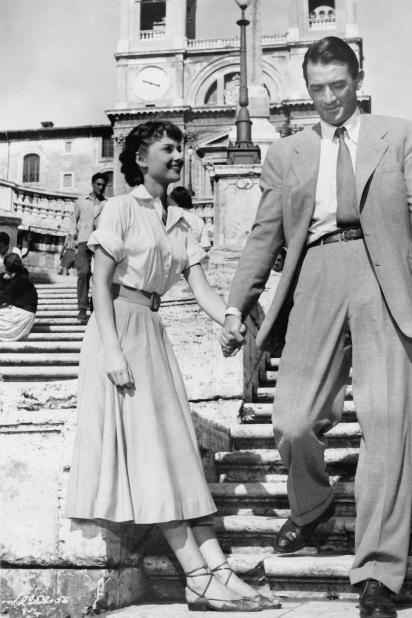
Enjoying Rome’s Vibrant Nightlife
Bars and Nightclubs
Rome’s nightlife scene offers something for everyone, from trendy bars to lively nightclubs. Whether you’re looking for a quiet cocktail lounge or a vibrant dancefloor, Rome has a plethora of options to suit your preferences.
Head to the Trastevere neighborhood for a bohemian and laid-back atmosphere, with numerous bars and pubs lining the narrow streets. Enjoy aperitivo, the Italian tradition of pre-dinner drinks accompanied by complimentary snacks, at one of the local bars. Le Mani in Pasta and Ma Che Siete Venuti A Fà are popular spots among locals and tourists alike.
For a more upscale experience, visit the Testaccio neighborhood, known for its stylish bars and clubs. Enjoy a classy cocktail at The Jerry Thomas Speakeasy, a hidden gem reminiscent of the Prohibition era, or dance the night away at Akab Club, a stylish venue with multiple dance floors and live music performances.
Alternatively, if you’re a jazz enthusiast, be sure to check out the vibrant jazz scene in Rome. Visit the famous jazz club, Casa del Jazz, located in the beautiful Villa Osio in the EUR neighborhood. Enjoy live performances by local and international jazz artists in an intimate and welcoming setting.
Live Music Venues
Rome is a city that loves music, and you can find a variety of live music venues catering to different tastes and genres. From classical concerts to rock gigs, there is always something happening in the city.
For classical music lovers, attending a concert at the prestigious Teatro dell’Opera di Roma is a must. This historic opera house showcases world-class performances, including opera, ballet, and symphony concerts. Immerse yourself in the grandeur of the setting while enjoying the elegance and beauty of the performances.
If you’re into contemporary music, Rome has numerous concert venues that host international and local artists. The Auditorium Parco della Musica, an architectural masterpiece designed by Renzo Piano, is a renowned music complex that hosts a wide range of concerts, events, and festivals throughout the year. From classical music to pop, rock, and jazz, there is something for every music lover.
For a more intimate and underground experience, explore the independent music scene in Rome. The Felt Music Club, located in the Ostiense neighborhood, offers a platform for emerging artists and hosts regular live performances, DJ sets, and art exhibitions.
Keep an eye on local listings and event calendars to stay updated on the latest concerts and music events happening in Rome during your visit.
Romantic Sunset Views
Rome’s romantic charm is not limited to its historic sites and picturesque streets. The city is also home to breathtaking sunset views that provide the perfect backdrop for a romantic evening.
Head to the Pincian Hill, located near Villa Borghese, for panoramic views of Rome’s rooftops and domes. This scenic viewpoint offers a peaceful and romantic setting to watch the sunset and enjoy a leisurely stroll hand in hand. Bring a blanket and a picnic basket for a cozy evening under the sky.
For a different perspective, make your way to the Gianicolo Hill, just west of Trastevere. From here, you can admire the stunning sunset over the rooftops of Rome, with St. Peter’s Basilica in the distance. Join the locals in cheering as the cannon fires at exactly 12 pm, a tradition dating back to the 19th century.
Another romantic spot is the Terrazza del Pincio, located near Piazza del Popolo. This terrace offers panoramic views of the city and the Tiber River, making it an ideal place to enjoy a romantic sunset with your loved one. Visit during the golden hour, when the warm hues of the setting sun bathe the city in a magical glow.
Late-Night Food Options
After a night of exploring Rome’s vibrant nightlife, you may find yourself craving a late-night snack or meal. Thankfully, Rome offers a variety of options for the night owls and hungry adventurers.
For a taste of Rome’s famous street food, head to Piazza Navona, where you will find numerous food stalls offering delicious treats. Grab a slice of pizza al taglio, a Roman-style pizza sold by the slice, and savor the flavors of the crispy crust and flavorful toppings. Alternatively, try supplì, deep-fried rice balls filled with cheese and ragù, or a traditional panino with mouthwatering fillings.
Trastevere is also a great neighborhood for late-night dining options. This lively district is known for its restaurants and trattorias that stay open late into the night. Enjoy a leisurely dinner with friends or savor a plate of pasta accompanied by a glass of wine. The relaxed atmosphere and cozy ambiance of Trastevere make it the perfect place to unwind after a long day of exploring.
Additionally, keep an eye out for late-night gelaterias, where you can satisfy your sweet cravings with a refreshing scoop of gelato. Gelaterias like Giolitti and La Romana are open late and offer a wide range of flavors to choose from.
Remember to check the opening hours of the establishments you plan to visit, as not all restaurants and eateries in Rome operate on a late-night schedule. Research local recommendations and ask for suggestions from locals to discover hidden gems that cater to your late-night cravings.
Experiencing Rome’s Annual Festivals
Carnival in Rome
Carnival, or Carnevale, is a festive season celebrated in many cities around the world, and Rome is no exception. The city comes alive with colorful parades, elaborate costumes, and lively street performances during this period.
The main highlight of Carnival in Rome is the grand parade that takes place along Via del Corso, one of the city’s main streets. Marvel at the intricately designed floats, watch the performers in vibrant costumes, and join in the festive atmosphere as music fills the air. Enjoy the street food and local delicacies sold by vendors lining the parade route.
Children and adults alike can participate in the festivities by wearing masks and costumes. Join the crowd in dancing and singing, and immerse yourself in the joyful spirit of Carnival. Don’t forget to try traditional Carnival treats like frappe (fried pastry) and castagnole (sweet fritters).
The exact dates of Carnival vary each year, as it is determined by the liturgical calendar. The festivities usually take place in February or March, culminating with the grand parade on the weekend before Ash Wednesday, which marks the beginning of Lent.
Easter Celebrations
Easter, or Pasqua in Italian, is a significant religious festival in Rome, drawing pilgrims and visitors from around the world. The city comes alive with religious processions, masses, and special events commemorating the resurrection of Jesus Christ.
One of the most solemn and moving events during Easter is the Via Crucis, or the Way of the Cross, held at the Colosseum. The Pope leads a torchlit procession, stopping at each of the 14 Stations of the Cross to pray and reflect on the suffering of Jesus. The atmosphere is solemn and reverent, creating a powerful experience for believers and non-believers alike.
Another highlight of Easter in Rome is the Papal Mass held in St. Peter’s Square on Easter Sunday. Thousands of people gather to receive the Pope’s blessing and witness the grandeur of the Vatican’s Easter celebrations. It is advisable to arrive early to secure a good spot and be prepared for security checks.
Additionally, Easter is a time for indulging in delicious Italian Easter delicacies. Look out for traditional treats like colomba (dove-shaped cake), pastiera (Neapolitan Easter pie), and chocolate eggs filled with surprises. These treats can be found in bakeries, patisseries, and supermarkets throughout the city.
Festa della Repubblica
On June 2nd each year, Rome celebrates Festa della Repubblica, or Republic Day, to commemorate the establishment of the Italian Republic in 1946. This national holiday is marked by various events and festivities in Rome, showcasing the country’s pride and patriotism.
The highlight of the celebrations is the military parade that takes place along Via dei Fori Imperiali, starting from Piazza Venezia and leading to the Colosseum. This colorful parade features the Italian armed forces, marching bands, and impressive military displays. Thousands of spectators gather to witness the procession and show their support for the country.
Another significant event is the open-house day at the Quirinal Palace, the official residence of the President of the Italian Republic. Visitors can explore the palace’s grand rooms, admire the art collection, and learn more about Italy’s political history.
Throughout the city, you’ll find various cultural events, exhibitions, concerts, and performances that celebrate Italian art, music, and traditions. Joining in the festivities allows you to experience the national pride and sense of community that permeates Rome on this special day.
Christmas in Rome
Christmas is a magical time to visit Rome, as the city decks itself in festive decorations, lights, and holiday cheer. From stunning nativity scenes to traditional Christmas markets, Rome offers plenty of ways to experience the joy of the holiday season.
One of the highlights of Christmas in Rome is the visit to the Vatican’s St. Peter’s Square, where you can witness the lighting of the Christmas tree and the unveiling of the life-size nativity scene. Admire the intricate craftsmanship of the nativity scene and listen to the Pope’s Christmas message.
For a unique Christmas shopping experience, head to Piazza Navona, which transforms into a charming Christmas market during the holiday season. Browse through the stalls offering a variety of crafts, gifts, and festive treats. Enjoy a cup of hot chocolate or mulled wine as you soak in the festive atmosphere.
Throughout December, various churches and concert halls in Rome host Christmas concerts and performances. Attend a classical music concert, a choir performance, or a Christmas carol service to immerse yourself in the spirit of the season.
Don’t forget to indulge in traditional Italian Christmas delicacies such as panettone and pandoro, sweet breads with dried fruits and nuts, and torrone, a nougat-like treat. These treats can be found in bakeries and food markets throughout the city during the holiday season.
Immerse yourself in the magical atmosphere of Christmas in Rome, and create lasting memories of this festive time of year.
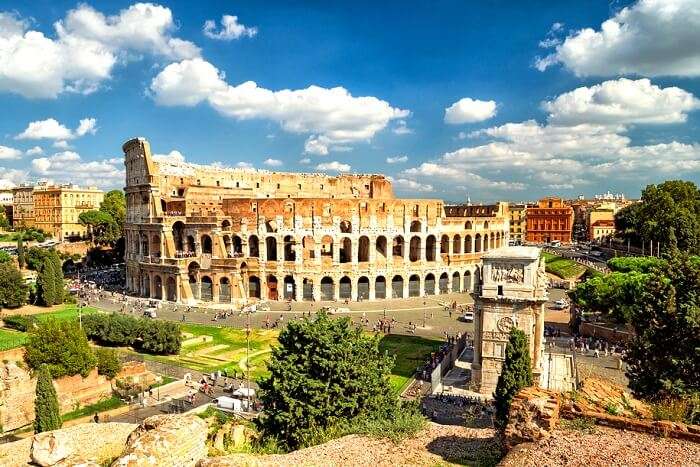
Safety Tips for Travelers
Avoiding Pickpockets
Rome, like any other popular tourist destination, is known for petty crimes such as pickpocketing. To protect yourself and your belongings, follow these safety tips:
-
Keep your belongings secure: Use a cross-body bag or a backpack that can be secured in front of you. Avoid carrying large amounts of cash or wearing expensive jewelry that may attract attention.
-
Be vigilant in crowded areas: Pickpockets often target crowded places such as public transportation, markets, and tourist attractions. Be aware of your surroundings and keep a close eye on your belongings.
-
Keep important documents safe: Keep your passport, identification, and other important documents in a secure place, such as a hotel safe. Carry a photocopy of your passport and leave the original in a safe place.
-
Avoid displaying valuables: Avoid flaunting expensive electronics or other valuable items in public. This can attract unwanted attention and make you a target for theft.
-
Be cautious of distractions: Pickpockets often work in teams, using distractions like asking for directions or bumping into you. Be cautious when approached by strangers in crowded areas and maintain a firm grip on your belongings.
-
Trust your instincts: If something feels off or suspicious, trust your gut instinct. Move to a crowded area, alert authorities, or seek assistance from a nearby shop or restaurant.
By following these safety tips and staying alert, you can minimize the risk of falling victim to pickpockets and enjoy your time in Rome with peace of mind.
Emergency Contact Information
It is essential to have emergency contact information readily available in case of any unforeseen circumstances during your trip to Rome. Make a note of the following numbers:
- Emergency services (police, ambulance, fire): 112
- Carabinieri (Italian military police): 112
- Police (Polizia di Stato): 113
- Medical emergencies: 118
- Tourist Police (Polizia Turistica): +39 06 6766 2912
Keep in mind that English may not be widely spoken by emergency services operators. If you require assistance, try asking for help from English-speaking locals or staff at your accommodation.
It is also advisable to have the contact information for your embassy or consulate in Rome. They can provide assistance in case of lost passports, emergencies, or other issues related to your nationality.
Additionally, ensure that you have travel insurance that covers medical emergencies, trip cancellations, and lost or stolen belongings. Familiarize yourself with the terms and conditions of your insurance policy and have the necessary details and contact information readily available.
Cultural Sensitivities
When visiting a foreign country, it is important to be aware of the cultural sensitivities and norms to show respect for the local culture and traditions. Here are some tips to help you navigate Rome’s cultural landscape:
-
Dress modestly when visiting churches and religious sites. Cover your shoulders and knees out of respect for the religious significance of these places.
-
Keep your voice down and avoid loud or disruptive behavior, especially in public places such as museums, churches, and historic sites. Romans value peace and tranquility.
-
Avoid touching or climbing on ancient ruins or monuments. These sites are historic treasures that should be treated with respect and preserved for future generations.
-
Respect local customs and traditions. Be open-minded and willing to learn about the Roman way of life. Observe social etiquette, such as greeting people with a handshake or kiss on both cheeks when appropriate.
-
Carry a small phrasebook or learn a few basic Italian phrases to show respect and engage with the locals. Italians appreciate the effort to communicate in their language, even if it’s just a few words.
Remember, being mindful of cultural sensitivities helps foster positive interactions, enhances your travel experience, and allows you to connect with the local community on a deeper level.
Conclusion and Final Thoughts
Your Roman holiday promises to be an unforgettable experience filled with history, culture, and culinary delights. By planning your trip wisely, exploring Rome’s historic sites, immersing in the local culture, indulging in shopping and souvenirs, taking day trips, navigating public transportation, enjoying the vibrant nightlife, and experiencing annual festivals, you will create cherished memories that will last a lifetime.
Remember to prioritize safety, respect the local customs, and embrace the beauty of Rome. Whether you’re admiring the Colosseum, savoring a plate of pasta, or witnessing the Christmas celebrations in St. Peter’s Square, the Eternal City will captivate your heart and leave you longing for more.
So, pack your bags, open your heart to new experiences, and embark on a Roman adventure that will truly be the trip of a lifetime. Rome awaits, ready to enchant you with its timeless beauty, rich history, and warm Italian hospitality.
